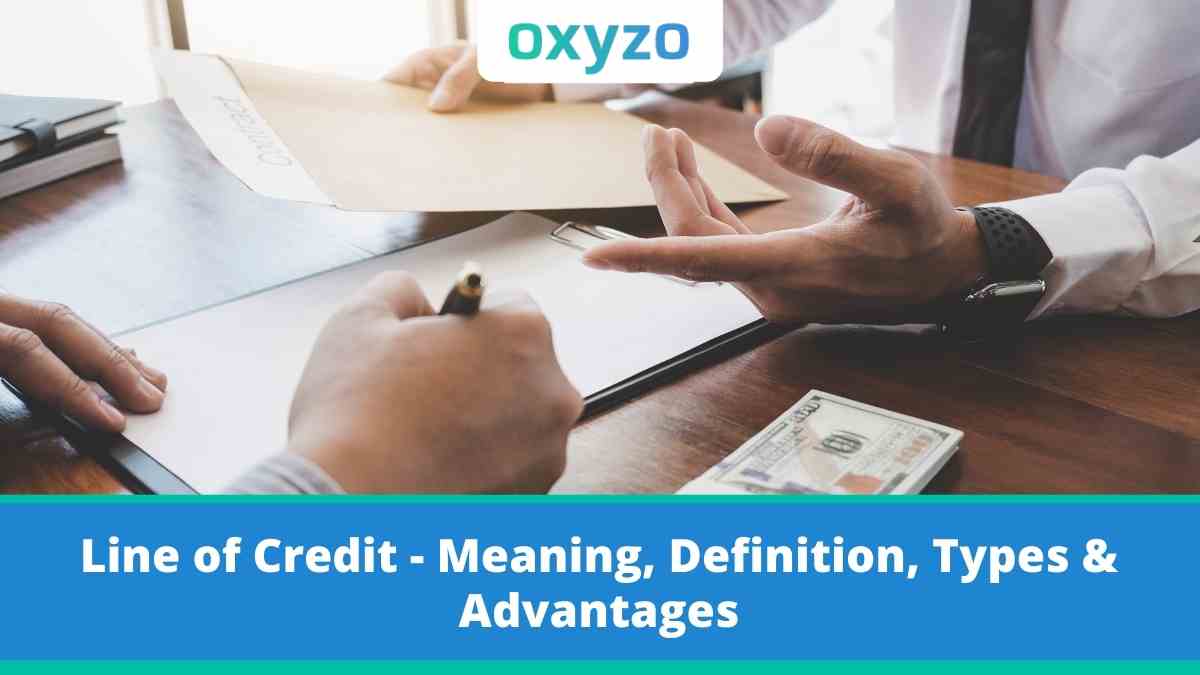Similar to credit cards, the line of credit for business is a revolving credit account that lets you borrow up to a limit without having to borrow the total amount at a go. They can be used in almost anything and are suitable for borrowers who may need funds but at different points in time.
However, compared to other loans and credits, a line of credit carries a lower interest and gives variable access to funds to users. Let’s know about the line of credit in detail and how it works.
What is a Line of Credit for Business?
A line of credit is an unsecured and ready source of funds, which can be used for business needs. The borrower can withdraw funds from the line of credit loan account either through bank transfer or line of credit cheques. Every borrower is allotted a credit limit for the loan term and can withdraw from that as many times as the borrower wants.
The loan withdrawn must be repaid with interest on the outstanding balance as per the terms of the lender and preset repayment schedule. During the line of credit facility, the borrower can also increase the credit limit based on their usage pattern and credit profile.
Importance of Line OF Credit
A “line of credit” stands as a financial safety net, offering flexibility and control that traditional loans lack. It’s a predetermined amount of money accessible when needed, allowing individuals or businesses to manage unforeseen expenses or capitalize on opportunities without undergoing a lengthy loan application process. The importance of a line of credit lies in its ability to provide instant liquidity, enhancing financial resilience and facilitating swift action in dynamic economic landscapes.
Different Types of Lines of Credit
Lines of credit are broadly classified into two categories:
#1: Secured Line of Credit
In this particular line of credit, you have to pledge your assets to get the line of credit loan for business. Failure to pay the amount borrowed, the lender will liquidate your assets to cover the losses.
#2: Unsecured Line of Credit
Under this type, you don’t have to pledge collateral to open a line of credit loan account. The lender extends the facility based on your eligibility and their own policy. Compared to the secured line of credit, the lender charges a higher rate of interest for this category.
The business line of credit is the most common type of line of credit availed by businesses to meet the business expenses of an ongoing nature such as working capital requirements, wage payments, inventory etc. It is offered to individuals with a high credit score, good credit history, with a favourable debt utilization ratio.
How Does the Line of Credit Work?
LOC is a very flexible credit option for individuals and allows withdrawals according to the borrower’s requirements. Further, the interest is only levied on the amount borrowed, not on the entire credit limit, and there is no compulsion to use the whole line of credit.
Advantages of Line of Credit for Business.
- Lower interest rates
- High borrowing limit
- Cost-effective
- Flexible repayment option
- Constant access to funds
- Best for meeting long term project costs, temporary cash shortfalls and emergency
Allows for better planning, as you would have only borrowed the amount you need and wouldn’t give in to impulse purchases at a later point in time
Should You Apply for a Line of Credit?
Business LOC is an excellent financial tool but is not for everyone. It is suitable for only those who require constant access to funds due to an irregular or unpredictable set of requirements. Further, you need to have a good credit score to qualify for the facility and maintain the same. In the event of default, the lender may stop your business LOC facility, which will adversely affect your credit score.

